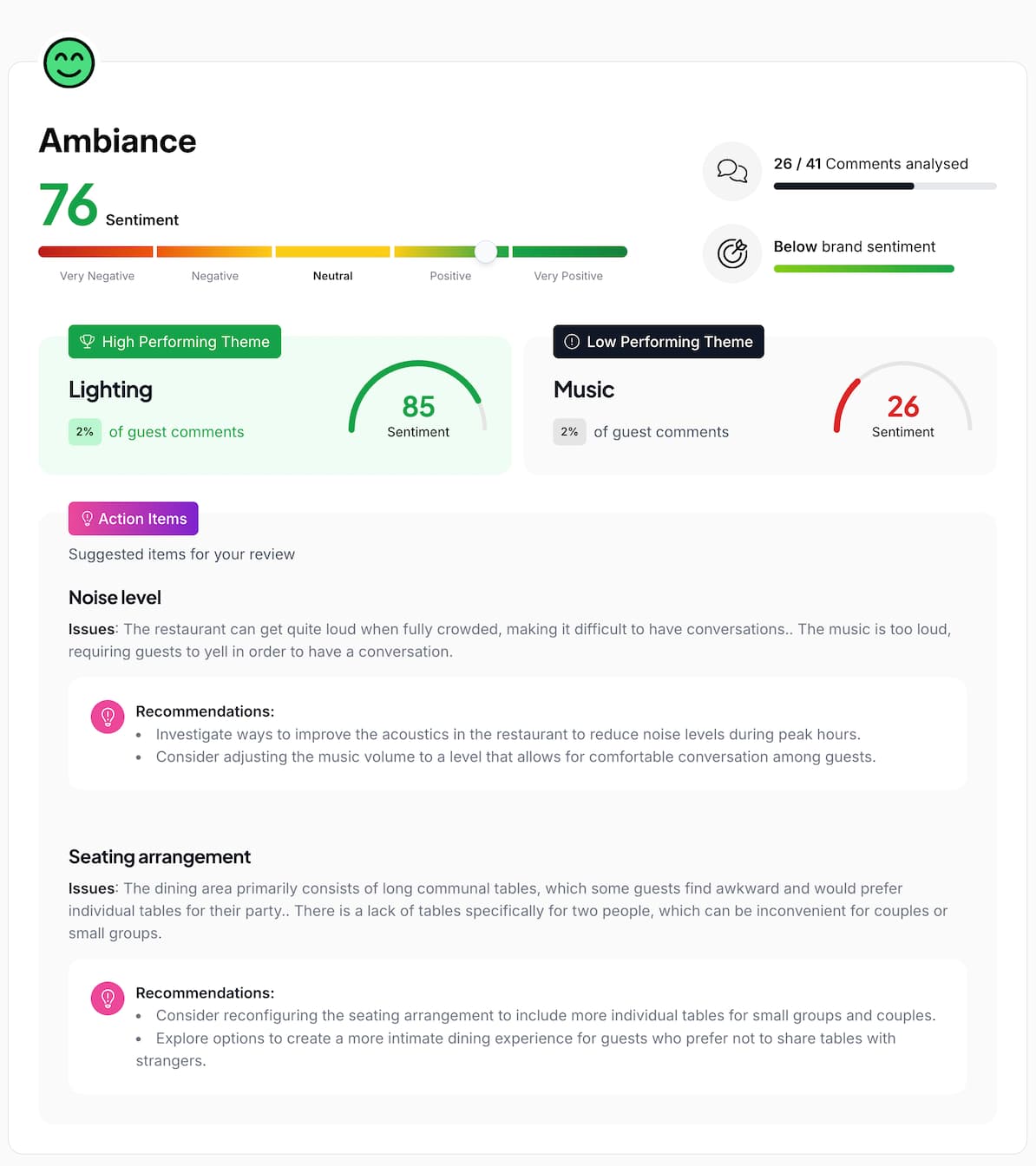Service Recovery
A Complete Guide To Service Recovery for Restaurants
Service mistakes inevitably happen in the restaurant industry. But how you handle them can make or break you. Here are 5 steps to service recovery that every restaurant should follow.

Do a quick Google search for "restaurant horror stories" and thousands instantly populate across Reddit, Buzzfeed, and more.
And if you consider how often people dine out—4.5 times per week for Americans alone—mistakes are bound to happen. Which is why having a restaurant service recovery plan is crucial.
Mistakes happen. But how you handle them can determine if (and how quickly) you're able to recover.
As a frequent diner myself, I've also had my fair share of bad restaurant experiences. What always surprises me most is how unprepared the restaurant is to deal with it. And that's what ultimately leads to a bad taste in my mouth (pun intended). Not that a mistake happened, but how poorly it was handled.
Which is why in this blog, I'm going to break down a 5 step service recovery guide that will help you not only recover quickly, but hopefully save face (and future business).
Table of Contents
Here are the 5 steps I'm going to break down:
Step 1: Acknowledge The Issue
There's a quote that's circulated around the restaurant industry that says the best restaurant service is invisible. Unless, of course, something goes wrong.
And since food is love, when a guest feels wronged by a restaurant, service recovery is a bit more difficult. According to Zyda, the top 3 most common restaurant complaints are:
- Low-quality food or drink
- Order mix-up
- Slow service
But as we know, there can unfortunately be many things that go wrong with restaurant service. So before we even talk about successful service recovery, here at Akira, we advocate for having a system in place to solicit direct feedback.
Direct feedback gives you the ability to address the problem head on with the customer. This will not only allow you to (hopefully) fully resolve the issue, but also to avoid a negative online review.
There are many ways to solicit direct feedback, including:
- Survey links/QR codes on receipts
- Online surveys
- Text message
- In-store feedback cards
Soliciting direct feedback is a pre-requisite for successfully resolving customer issues. With that in place, you have better tools to listen, actively and attentively, and understand what went wrong and how you can fix it.
Give guests your undivided attention. By taking time to focus exclusively on your guest and the feedback they have to provide, you let them know you value their business and start to repair the damage that's been done.
Step 2: Apologize Sincerely
Being an active listener is step one to service recovery. Step two? Offering a mea culpa (aka owning up to the mistake).
As OpenTable suggests, you should respond to guest complaints with empathy and kindness. Guests want to feel validated. Here's how you best go about this:
- Acknowledge that a mistake was made, and their right to be upset. Try to keep it at a high level but show empathy. The goal is to focus on acknowledgement that something went wrong, not make excuses.
- Address and reflect on what went wrong. Perhaps the server was new and forgot to bring the drinks, or the kitchen was so busy during lunch there was a mix-up with the food. Addressing what went wrong humanizes your employees.
-
Apologize
for what happened. Keep it straight-forward and genuine.
"Thanks for letting me know about [INSERT SERVICE ISSUE HERE]. It should never have happened. We didn't meet your expectations today and for that, I'm truly sorry."
Step 3: Resolve The Problem
Any successful service recovery strategy includes a speedy and satisfactory resolution. The resolution should be two-fold: focused first and foremost with making things right with the guest. And secondly, letting the guest know how you plan to address the issue with your employees.
-
Make it right with the customer:
through removing items off the bill, offering discounts, gift cards, or other incentives to encourage them to give you another try.
- Example #1) If a party is waiting too long for their reserved table, apologize for the delay, explain the situation, and ask if they'd like a complimentary drink while they wait.
- Example #2) If a party member's food was served cold—apologize, explain what happened, and offer to make a new one while removing the food from the bill.
- Make it right with operations: let the customer know how you plan to use the mishap as a teaching moment for your staff. The goal is to let them know you're taking their issue seriously, so hopefully it doesn't happen again.
Step 4: Offer Compensation
It's never a bad idea to offer additional incentives to sweeten the mood (another pun intended) after a service mishap. For example, one real-life restaurant manager told Huffington Post he not only profusely apologizes and explains how he's swiftly handling the situation, but then offers dessert to the entire table on the house.
Going above and beyond to make up for the mistake is the best chance you have at a quick service recovery.
Step 5: Follow Up
You told your guest that you would address the issue, so make sure that you do. This service recovery best practice helps you avoid repeating costly mistakes. You should have a framework in place to collect guest feedback and deliver operational level insights so that you can prevent these mistakes from happening again.
Some restaurants refer to this as a scorecard. But traditionally, restaurant scorecards focus more on bottom line and less on what your guests are communicating through their feedback.
We aimed to transform the restaurant scorecard in Akira. So that once you used our platform to easily manage your feedback and reviews, you could gain actionable insights to improve operations, and ultimately retain more customers. Here's a sneak peek of what the new theme summary on our scorecard looks like:
